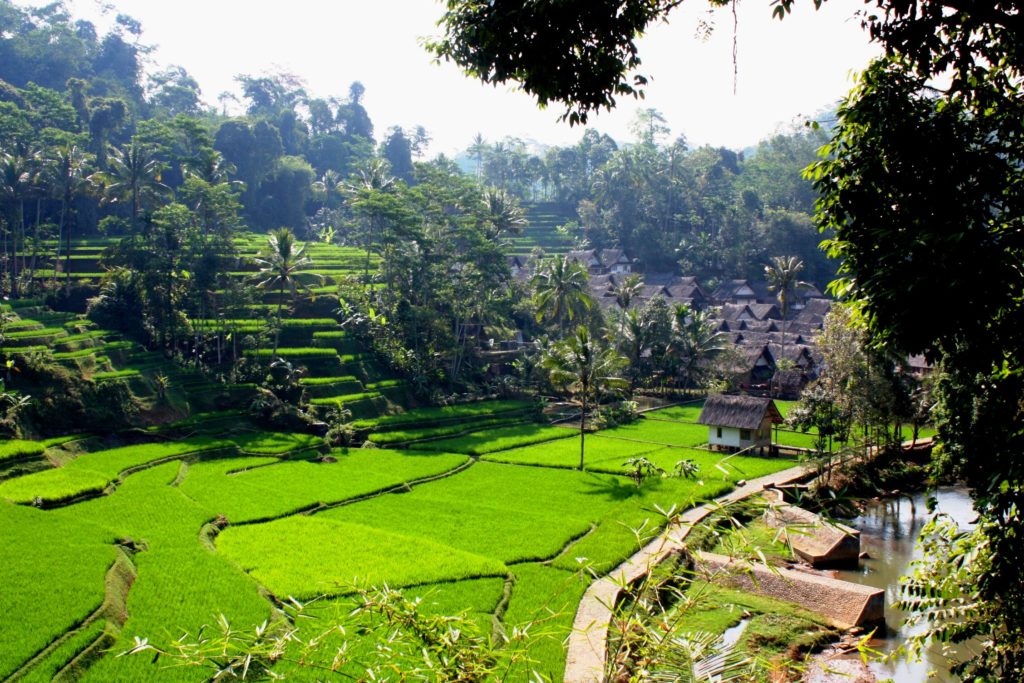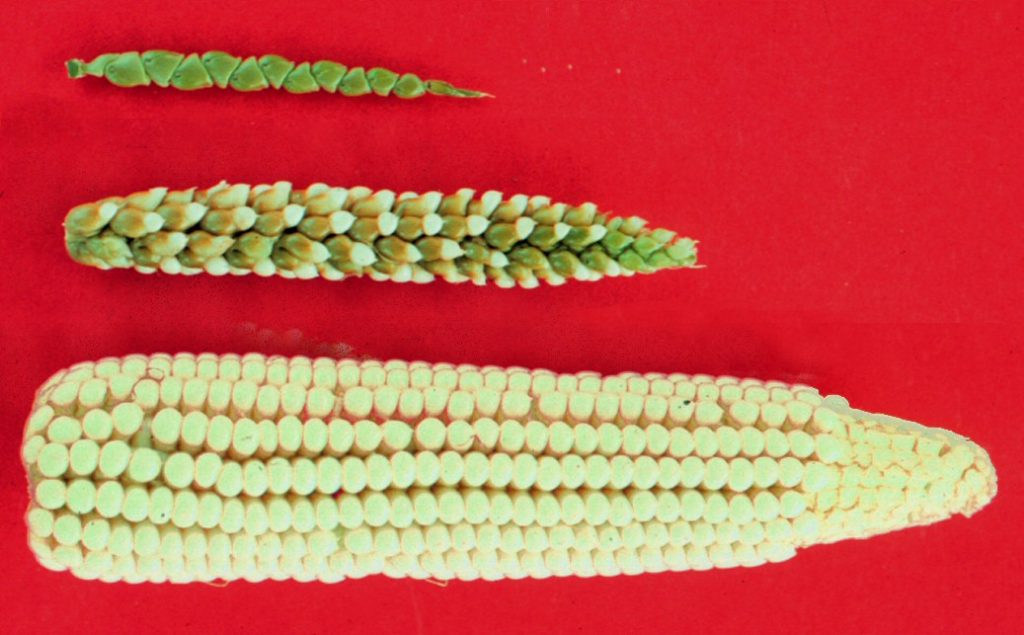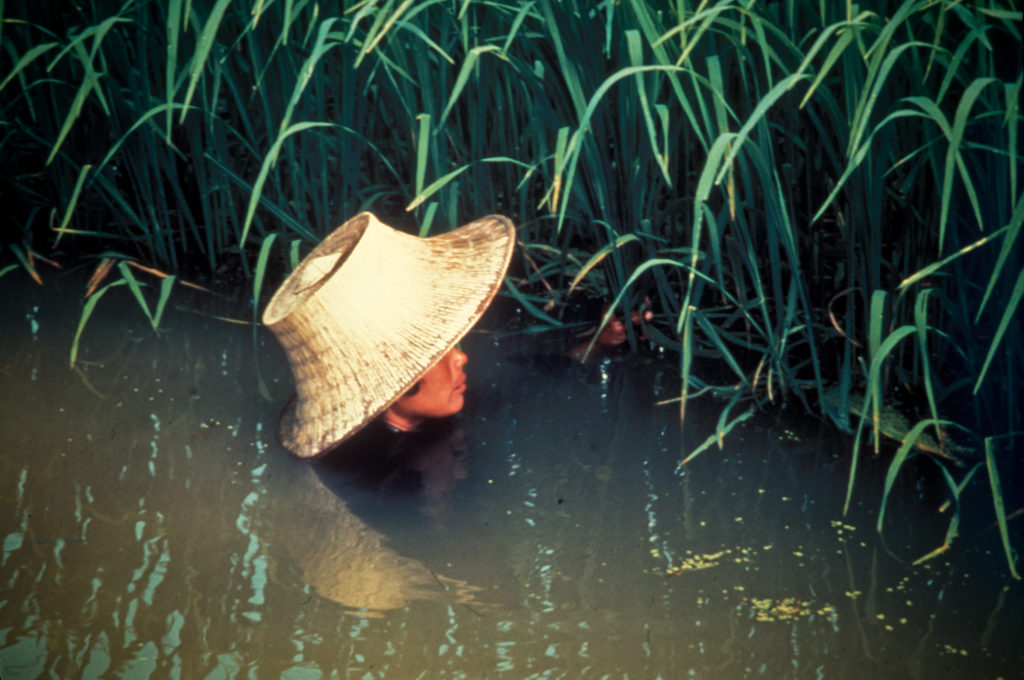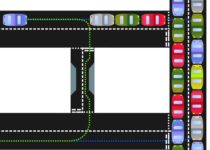These 2 Contrasting Genetic Traits In Rice Cannot Be Ignored When Improving Their Survival And Yield

Ever since the agricultural revolution more than 5000 years ago transformed us from nomadic wanderers to settlers living in villages surrounded by fields, we have been constantly improving the yields of domesticated plants through cross breeding, and more recently, through genetic engineering. The extent to which we have transformed crop plants like corn and carrot is shown in this post. The pic below shows how dramatic the transformation of corn has been.

One of the most consistent efforts, especially since the advent of modern breeding and genetic engineering techniques, has been to reduce the height of crop plants like rice and wheat. This is because if the plant spends less carbon compounds generated from photosynthesis to grow tall, it can spend the more of those carbon compounds to develop flowers and grains, which are more useful to humans than the tall stem. Moreover, shorter height also makes the plants less likely to topple over by wind. However, there is a distinct disadvantage that rice plants with short height face in the regions where they are grown- short plants are more vulnerable to getting submerged and killed by flood water.
So, changing height of the plant creates a trade off between higher crop yield plus resistance to toppling over by wind on one hand, and resistance to floods on the other. Until recently, it was assumed that increased vulnerability of short rice plants to floods was something farmers had to live with, if they wanted increased rice yield.
In course of time, however, a set of genes has been discovered, that could keep the plant short in the absence of flood, but make it grow tall specifically when the water level starts rising, or keep them short but tolerant to brief periods of complete submergence. Genetic engineering of rice is not without precedent. You can read about other genetic engineering efforts for rice in this previous post of mine.
Defective SD1 Gene Causes Less Than Normal Growth Of Rice Stem
The leaf blades of a rice plant are joined to the stem through a collar. This region of stem contains a group of cells called meristem. When the meristem cells of the stem start growing and dividing, the height of the plant increases. A hormone called gibberellin induces the growth and division of these cells. One of the enzymes involved in the production of gibberellin is GA20 oxidase 2. And the gene that produces this enzyme is SEMIDWARF 1 (SD1).
The short varieties of rice in use today are short because they contain a defective version of the SD1 gene, which produces less than normal amounts of gibberellin during the juvenile (leaf producing) stage of the plant. Once the plant reaches the adult (flowering) stage, however, enough gibberellin is produced in the uppermost parts of the stem, so that the rice flowers grow well above the leaf canopy. This is the reason why the gene is named semidwarf.
SD1C9285 and SK1/2 Genes Promote Elongation And Are Activated By Flood Water
SD1C9285 (the non-defective version of SD1), SK1 (SNORKEL1) and SK2 (SNORKEL2) are three genes that promote elongation of rice plant stem. Interestingly, these three genes get activated when the rice plant starts to slowly get submerged by flood water, so that the upper part of the rice stem grows at an astonishing rate of 25 cm per day, towering well above the level of flood water. The molecule that the rice plant uses to sense the rising water level is ethylene. Ethylene is normally produced by the plant cells but is quickly released into the air, so that its concentration in the plant cells stays low.
However, when the stem is submerged in water, ethylene can’t be released into the air as it diffuses very slowly in water. This causes a rise in concentration of ethylene in plant cells, which activates SD1C9285 and SK1/2 genes. Once activated, these genes cause elongation of the stem, preventing complete submergence of the rice plant.

ACE1 Gene Promotes Elongation While DEC1 Gene Suppresses Elongation, And Both Are Regulated By Gibberellin
How gibberellin influences stem elongation in rice is not fully clear. But two genes have recently been documented, that are influenced by gibberellin. ACE1 (ACCELERATOR OF ELONGATION 1) promotes elongation, while DEC1 (DECELERATOR OF ELONGATION 1) inhibits elongation. Gibberellin promotes the expression of ACE1 but inhibits the expression of DEC1. The activities of these two genes, therefore, also determine the height of the rice plant. The deep water rice varieties are tall because they have a version of ACE1 that is active from early stages of plant growth, and the DEC1 in them is suppressed by gibberellin. Semi dwarf rice varieties, on the other hand, have a defective version of ACE1 and a version of DEC1 that’s not suppressed by gibberellin.
Since short rice plants are desirable as they spend more of the carbon on seed production instead of stem elongation, over the course of domestication of rice, the defective version of ACE1 and functional version of DEC1 were selected for. While this created short, high yielding rice varieties, it also made the plants vulnerable to flooding. Some semi dwarf varieties have a gene called ACE1-LIKE1, which is closely related to ACEI and only elongates the upper regions of the plant stem, that carries the flowers and seeds, enabling those parts to stay above flood water.
SUB1A-1 Gene Makes Short Rice Varieties Tolerant To Complete Submergence
A version of ACE1 that is present in C9285 (ACE1C9285), is expressed during submergence, leading to quick elongation of the plant stem. And the expression of ACE1C9285 is triggered by another gene that is also expressed in response to submergnce, namely SUB1C. There is another gene, however, that can make tall height altogether unnecessary for surviving floods. This gene is SUB1A-1. SUB1A-1 is closely related to SUB1C, and plants that carry SUB1A-1 gene don’t express the SUB1C gene as well as others. Unlike the genes that promote elongation in response to submergence, SUB1A-1 gene actually inhibits elongation. But it also makes the plant enter a quiescent state during submergence, which enables the plant to survive brief periods of submergence.
Conclusion
As is all too common in life of most species, rice has had to make compromises between different wants during the course of its evolution, first through natural selection and later through artificial selection by humans. During the course of domestication, humans have selected semi dwarf varieties of rice that have defective versions of genes that promote elongation, and have fully functional versions of genes that inhibit elongation. These semi dwarf varieties of rice yield more grains than wild rice, as the carbon they would have used to elongate their stem is now used to produce extra grains instead. However, their short height also makes them vulnerable to submergence during flooding.
In course of time, however, the discovery of multiple different genes that are involved either in promoting elongation of plant stem, or in inhibition of plant stem, and also genes that make the plant tolerant to brief periods of submergence, promise to enable creation of multiple different varieties of rice that are suited to unique climates of different regions. This can be done by fine tuning the ability of rice plant to produce high grain yield, increase tolerance to submergence, and selectively elongate the upper part of stem hosting the flowers and seeds, precisely when the flood water starts to submerge the plant.
The discovery of genes that get activated and promote stem elongation precisely in response to submergence, could confer multiple benefits to rice plants. These plants could be short, and therefore high yielding and resistant to toppling over by wind, in absence of submergence, and capable of surviving submergence by elongating their stem during submergence. This fine tuning of the different traits in rice could go a long way in cutting down the losses sustained by destruction of rice crops by floods, which currently amount to billions of dollars every year around the world.


